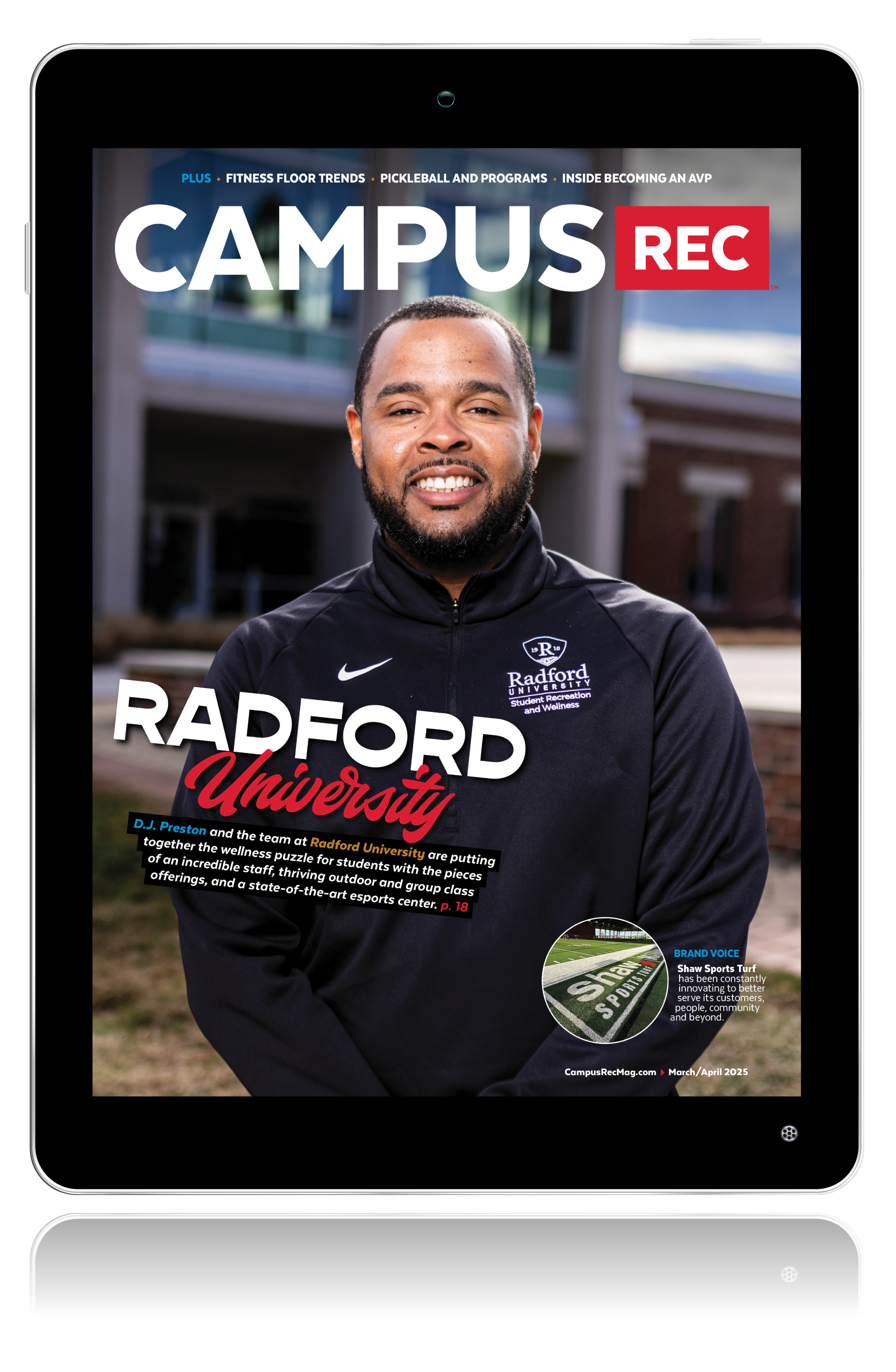University funding for campus recreation programs varies across institutions, and revenue-generating programs (RGP) can be a way to supplement or augment department funding.
RGPs open to the local community can appeal to positive community exposure for the university and can contribute to future recruitment. While student programming is a main component of campus recreation, programming that is revenue-generating, external-facing and may include minors could require additional approvals from fee committees, if not just your departmental chain of command. Having a clear program plan in place can help garner support and launch a well-planned program.
Here are key components to consider when creating a new RGP:
1. Program Name and Description
Start with the basics — designate a name and program description. When it comes to marketing your program, you’ll use this on flyers, social media posts, web pages, etc.
2. Define the Target Audience
Who are the ideal program participants? What ages can participate? If the program is geared toward youth ages, additional checkpoints may be needed for hosting minors on campus.
3. Define Staffing, Space and Equipment Needs
Staffing needs should consider what staff, how many and what type of training they need to be successful running the new program. What staff will support the new program? Will current staff suffice or are new staff needed? How many are needed? Some programs require a ratio of staff to participants, so be sure to know what applies to this program. Let’s say your new program is the mirror image to a student program, this time it is open to the public and you assess a fee for participation. Even if you can use current staff, a clear description of program responsibilities should be part of their training.
Consider the space and equipment the new program will use. Are there conflicts with student programming in the same space? Does it take away from student use of your area? Do you have equipment and supplies to support the new program? Keeping student programming your priority can help when considering when and where to fit external programs in your schedule.
4. Budget
Part of the pitch for a new revenue-generating program is showing profitability. Put a mock program budget together, starting with revenue. What is the cost per person? How many people do you expect to participate? Most programs have a capacity which will translate into your maximum revenue and a minimum which will be your “break even” point. Once you estimate your expenses, you will be able to determine your minimum number for participation.
Make a list of your expenses. Consider all direct costs like staffing fees and supplies.
Consult with your business or budget office about collecting new revenue. Institutional practice varies about revenue accounts and approval processes to establish a new one.
Determine how fees will be collected. Does your program area already collect fees? If so, adding another point of sale should be seamless. If collecting fees is new, check with your budget office about best practices and policies.
5. Safety
A critical part of all programs is safety. Your program should have a clear emergency response plan of which staff are trained. Consult with general counsel about release forms or liability waivers. Release forms should be built into the sign-up process.
6. Sign-up and Marketing
Determine how formal or informal program sign-up needs to be. Budget considerations from Step Four will determine how fees are collected. Program description, minimum or maximum sign-ups, and program fees will be part of your marketing materials. Determine your methods of marketing — e.g., print, web, social media — and how that relates to your target audience.
7. Benefit and Impact
Now that the program structure is mapped out, be prepared to share who benefits from the new program. Likely beneficiaries are: the local community who will benefit from a new program offering; student staff who will benefit from more or different work experience with a new population; the campus recreation department who will benefit from increase revenue and new relations with the community; and the greater university who benefits from furthering its brand in the community. Lastly, consider impacts to ensure your program can be offered without negatively impacting student use or access to your area.
This program planning outline covers key criteria that will demonstrate to senior leadership your program is well-planned and has the operational infrastructure to be successful.
Want more expert insights like this sent straight to your inbox each week? Sign up for a digital subscription here.










